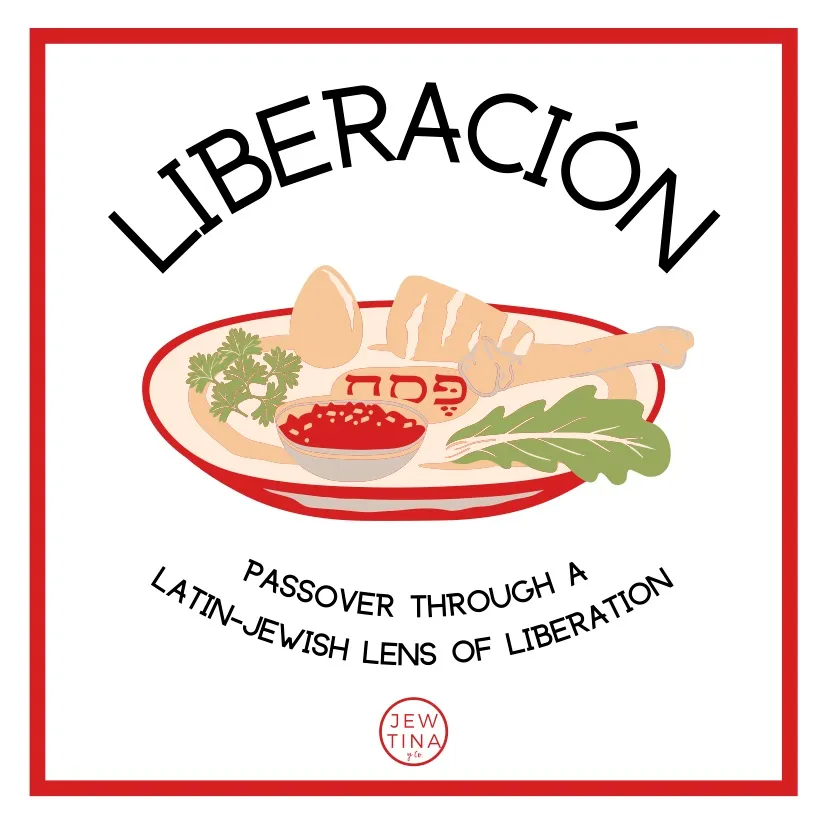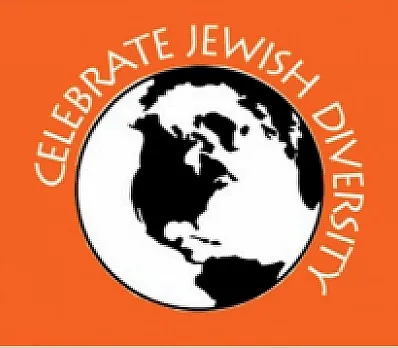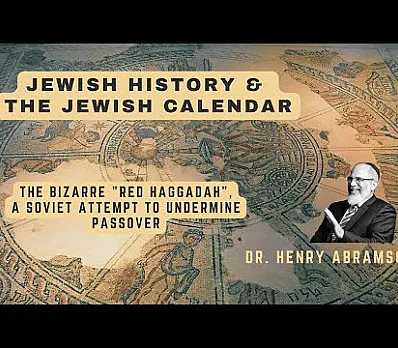LIBERACIÓN: Passover through a Latin-Jewish Lens of Liberation (English Version)

Every year around the world, the Jewish people gather in family and community to recount the Passover story, the tale of our collective liberation from Egypt. We are charged to tell the story of our ancestors bound in slavery and experience Passover as if we ourselves went out from Egypt to freedom.
We put ourselves there symbolically each year, to remember the suffering of those who came before us and bring to mind the suffering that still exists in our communities and societies today. In fact, we can observe Passover as a call for community care and re-orienting ourselves towards justice and liberation for all people.
As Latin Jews, who have a connection to América Latina, Passover is an opportunity for us to also remember and reflect upon events that have taken place in the region many of our families have called home for hundreds of years. We all carry narratives of pain with us around slavery, persisting systems of oppression, and sources of suffering either from our ancestors or what may exist in our present or recent history.
The Haggadah is summarized with the idea: “now we are slaves, next year, may we all be free”. In order for us to move toward liberation, who must be included in that freedom? What groups of people have been consistently oppressed? Where in our own lives are we knowingly or unknowingly contributing to their oppression?
This Passover, we invite you to join us as we personalize our liberation story. In the movement from “mitzrayim” (Egypt), the narrow place, to freedom and expansiveness. Let us march together towards a redemption that includes and carries the memories of those who are and were most exploited, most vulnerable, and most marginalized within our communities.
The Seder Plate through a Latin-Jewish Lens of Liberation
MAROR - Bitter Herb
This bitter herb reminds us of the bitterness of slavery that our ancestors endured in Egypt. Typically represented on the Seder plate with horseradish, its taste consumes our senses. With maror, we remember the suffering of our people and planet, both exploited and destroyed throughout our history.
-
The Conquest of the New World: It wasn't long after the New World was discovered, that explorers realized the profitability that came with the natural resources of the region. Under the command of ruthless conquistadores, the Aztec and Inca empires were conquered from 1519-1533, and over 4 million enslaved Africans were taken to Latin America via the Atlantic slave trade. This led to centuries of Spanish and Portuguese rule, enslavement and marginalization of black and indigenous peoples, and the formation of a racial caste system that systemically continues to oppress black and indigenous people in Latin America today.
CHAZERET - Second Bitter Herb
A second bitter herb, typically used in korech or the Hillel sandwich, consists of matzah and bitter herbs (some add haroset as well). Often romaine lettuce symbolizes the period of time in Egypt that began soft, yet ended hard and bitter (looking at the ends of a piece of lettuce). This second taste of bitterness holds the suffering of those who were victims of terrorism.
-
El Atentado a la AMIA (AMIA Bombing): On July 18, 1994 (the 10th of Av in the Jewish year of 5754), a man driving a Renault utility truck loaded with several hundred pounds of ammonium nitrate and TNT pulled up to the Jewish community center of Buenos Aires (Asociación Mutual Israelita Argentina - AMIA), and detonated his bomb. Claiming the lives of 85 people and injuring hundreds, this single event completely changed the face of Latin American Jewry. Long-lasting security measures were implemented in schools, synagogues, and sports and cultural centers across Latin America. Today, no Argentinian government has brought any of the perpetrators to justice.
ZEROA - Shank Bone
A roasted lamb shank bone signifies the lamb that Jews sacrificed as the special offering when the Temple stood in Jerusalem. The zeroa serves as a visual reminder of the sacrifice that the Israelites offered to the Divine before leaving Egypt and remained present as a sacred ritual for generations after until the destruction of the Temple. With this symbol, we name what is sacrificed when oppression goes uninterrupted in our communities.
-
Anti-Indigenous and Anti-Black Racism: Latin America has a painful and traumatic, historical relationship with colonialism. Since the establishment of communities in the New World, concepts of multiracial identity have been present and supported by a Spanish caste system that outlined all the different ways the indigenous communities had mixed with Africans and Europeans – and the rights they held based on their racial identity. In the early to mid-20th century, a number of countries in Latin America adopted the concept of “mestizaje,” or mixing and blending, in an effort to eliminate racial conflict and promote the idea of national identities. While many of us think there is no racism in Latin America as a result of this, Eurocentrism continues to dominate our culture's beauty, economic, educational, entertainment and linguistic standards. Furthermore, we cannot address anti-Indigenous and anti-Black racism in our economic, environmental, political and social systems without recognizing and interrupting the erasure of Indigenous and Black history in Latin culture. As Jews, we are also complicit of anti-Black racism in our Jewish communities and cultural spaces. Historic and current racism towards Jews of Color – in particular Black Jews – can be witnessed in our institutional policies, conversion practices, media and personal attitudes.
KARPAS - Green Vegetable
A green vegetable, typically parsley, represents the initial flourishing of the Israelites during the first years in Egypt that is dipped in salt water or vinegar (according to family tradition) to taste both the hope of new life and the tears that the Israelites shed in bondage. With this symbol, we recognize the complexities of any immigration journey, both holding hope as well as pain and sacrifice. We reflect on the experience of our community members who are undocumented, DREAMers, belong to mixed-status families, have been detained at the border or have died on their way to freedom.
-
Immigration: Currently, there are approximately 11.5 million undocumented immigrants living in the United States. These 11.5 million people are spouses, parents, children, Dreamers, coworkers, and neighbors who don’t have the correct paperwork to be present in the U.S. Of this group, 62 percent have a U.S. citizen child, 13 percent have a U.S. citizen spouse, and two-thirds have been in the United States for over a decade. While immigrants from Latin America make up the plurality of undocumented experience, undocumented Americans are also of African, Asian/Pacific Islander, Caribbean and European descent. They are our friends, family and community members, and the lack of a pathway towards citizenship demonstrates the brokenness of the current immigration system and the need for systemic, comprehensive and compassionate immigration reform.
HAROSET - Sweet Fruit Paste
This mix of fruits, wine or honey, and nuts symbolizes the mortar that the Israelite slaves used to construct buildings for Pharaoh. The name itself comes from the Hebrew word cheres or clay, and when we think about the ‘glue’ of the Latin-Jewish community, we reflect on the joy within our culture that holds us together.
-
Latin-Jewish Joy: Throughout the Latin community, one thing that can be found in each country is ‘Esperanza’, the essence of hope that is carried by its people. It exists among the warm embraces from a welcoming loved one or friend and in the pride around generations-old cultural gatherings and celebrations. There is more that bonds the Latin community together than what sets it apart, and we’ve identified resilience to be a common trait among Latinos/x. Our shared experiences can be heard in song, embodied in dance, and experienced in taste - we carry our stories with us and take pride in the mosaic of who we are - a multitude of ethnicities, races, and cultures that create the vibrant community that we are. The hope, the ‘esperanza’ roots us in memory of our familial and collective journey, yet, it also waters the seeds for future generations, spirited in joy. As our tradition says, “cuando llegue la alegría, celébrala”, translation, “when the moments of joy come for you or dear ones, celebrate and savor them”!
BEITZAH - Egg
While there are many different interpretations of the Beitzah, it sits on our seder plates adding an element of life to balance the aspects of mourning. In some families, the roundness of the egg represents the cycle of life and for others, it represents new beginnings or hope. Even in the most painful of times, there is always hope for a new beginning.
-
Celebrating Our Stories: We are interconnected through our stories. In fact, centuries-old Sephardic wisdom says, “el Mundo es un pañuelo”, literally translated to “the world is a handkerchief”, reminding us that the world is as small as a handkerchief that fits in your back pocket. As we seek to reach liberation, we remember everyone who must be included in that march, and we can participate in the act of remembering with storytelling. Our story is our power and as we seek to discover and create more spaces where Latin-Jews can connect, celebrate, as well as be celebrated and elevated, we want to empower ourselves, our families, and community members to share their stories. When we examine the intersections of our identities we can uncover the abundance within us, and in doing so we make room to connect with others through shared heritage and story. This creates the space for collective learning, healing, and growing through leadership, community engagement and advocacy.
“Next year, may we all be free” as we continue to walk toward our collective liberation.
Questions for Reflection
-
How have I come to understand or experience liberation?
-
In what ways can Passover help me connect to ancient and modern forms of slavery and oppression?
-
In addition to the injustices mentioned above, what other tragedies am I remembering this Passover?
-
Moving forward, what are ways in which I can better learn and become informed about injustices experienced around the world?
-
How can we introduce these stories into our families and Passover seders?
-
How has ancestral trauma (the trauma my ancestors experienced) shown up in my life? My body?
-
What are ways in which I can begin to heal suffering that has been passed down to you?
-
What does Latin-Jewish joy look like for you?
-
What do you appreciate most about your multifaceted identity?
Here’s to a meaningful, Passover, Chag Sameach - Next year in Jerusalem!
Favorites 2022
- Introduction
- Kadesh
- Urchatz
- Karpas
- Yachatz
- Maggid - Beginning
- Commentary / Readings
- -- Four Questions
- -- Four Children
- -- Cup #2 & Dayenu
- -- Exodus Story
- -- Ten Plagues
- Motzi-Matzah
- Koreich
- Shulchan Oreich
- Rachtzah
- Bareich
- Hallel
- Nirtzah
- Songs
Inspired to create
your own Haggadah?
Make your own Haggadah and share with other Seder lovers around the world
Have an idea
for a clip?
People like you bring their creativity to Haggadot.com when they share their ideas in a clip
Support Us
with your donation
Help us build moments of meaning and connection through
home-based Jewish rituals.
OUR TOP CONTRIBUTORS
Passover Guide
Hosting your first Passover Seder? Not sure what food to serve? Curious to
know more about the holiday? Explore our Passover 101 Guide for answers
to all of your questions.






















